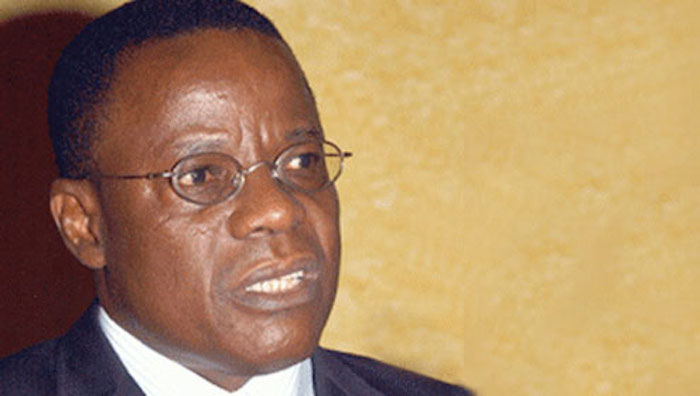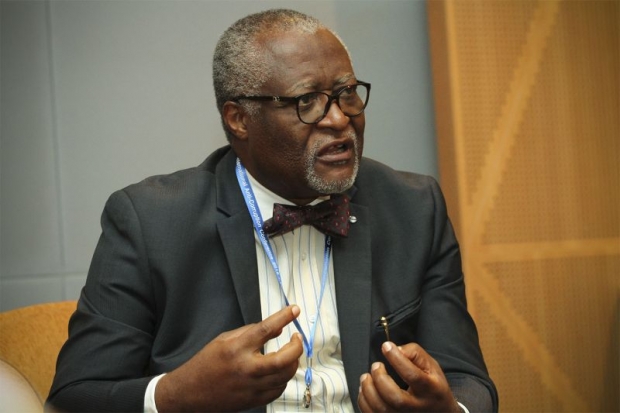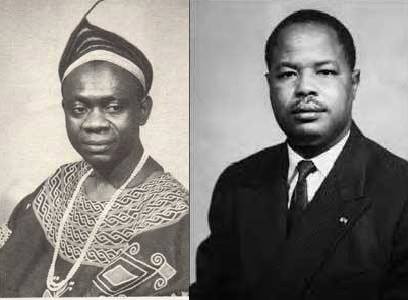OBVIOUS PITFALLS OF CAMEROON’S ‘DIALOGUE’ PROCESS
Summary
After three years of silence, President PAUL BIYA’ much-awaited decision to use dialogue as a tool to address the numerous crises affecting Cameroon is now underway. However, the substance in his national address on September 10th and the tweets and Facebook posts by his government as of September 17th, 2019 offer little assurance that the process will either be inclusive nor address the root cause of the crisis.
Relying on learnings from other countries who have gone through this exercise, the following elements are critical.
1. Choice of location-neutral territory
2. Selection of moderator – a neutral party
3. Ceasefire and amnesty
4. Release of leaders in jail so they can participate
4. Predetermined Agenda/Program
5. Determination of enforcement mechanism for final resolutions
6. Transition government to reset the system.
To ensure that this is not business as usual and the people of Cameroon are not railroaded into a protracted and avoidable conflict, this document has been quickly compiled to help the public understand what they should expect and ensure that the government does what is best for Cameroonians and peace in Africa.
TIME ALLOCATED IN HOURS FOR CONSULTATION
1. SUPPRESSION OF THE ‘ANGLOPHONE’ VOICE
This governmental consultation called a ‘dialogue’ is being sold to the international community as a gesture by Paul Biya to solve the crisis in the NW and SW regions. However, they only get 5% of the time. Out of 52 total hours in the plan proposed by PM Dion Ngute’s office, the NW and SW get 30 minutes each. Cardinal Tumi, whose consultation conference was never authorized, gets 1 hour. NW and SW Women’s Task Force also gets 1 hour. The government has also failed to communicate the process used to identify the representatives from the NW and SW before the start of consultations. This mistake undercuts the credibility of the entire process from the beginning. This is a dialogue in name only and violates the fundamental principle of inclusiveness. Though the primary focus is Southern Cameroons, they are already being short-changed at the Consultation phase.
2. LACK OF CITIZEN REPRESENTATION
The citizens of Cameroon are excluded from the ‘Dialogue’ Process.
31.5 out of 51 hours are allocated for politicians and leaders of organizations and syndicates.
13 hours are allocated for the Diplomatic Community.
6.5 hours are allocated to representatives of the 10 regions.
Of the 6.5 hours allocated to the people from the regions, only 1 hour is allocated to the people from the NW and SW. The process used to identify the representatives from the other regions is not available before the start of consultations. This mistake undercuts the credibility of the entire process from the beginning.
3. SHORT DURATION OF 5 DAYS
The consultation phase is currently scheduled to run from Tuesday, September 17, 2019, through Thursday, September 26. In recent history, only one dialogue process has lasted less than one week. Egypt was a catastrophe. If the Egyptian model is what inspires the Biya regime, it is fair to state that the consequences of such a decision will be the entire responsibility of President Paul Biya. Given the 57 year history of this problem, the announcement that the dialogue will run from September 30 through October 4, 2019, means the President Biya is trying to establish the shortest record to address a problem that dates longer than most of the crises where the process has been used.
4. LACK OF NEUTRAL & CREDIBLE FACILITATION
It is crucial to have a skilled facilitator that all parties accept and feel comfortable with to make the process as fair and even-handed as possible. Cameroon’s ‘dialogue’ process is facilitated by Prime Minister, Dion Ngute, who is Head of Government and an appointee of President Paul Biya. As an unelected official, he is answerable to the President only. Furthermore, the government has failed to communicate a process that ensures the neutrality of the upcoming process.
5. CHOICE OF LOCATION
The current venue for consultations with the government of Cameroon is the Prime Minister’s Office. If history is to be relied on, the occasion will be staged to ensure that the attendees feel and submit to the authority of the state. Modalities on the form of the encounters and the substance remain secret. After consultations, and potentially concessions have been exacted, the stage will be set for another event the Yaounde Congress Hall, which to many represents an institution under the control of the CPDM ruling party. These choices violate the neutrality expectations of the parties who do not own or control these privileges and set the stage for a process where the government has total control of the environment. Given the current stage of the conflict, most parties acting in good faith would have opted for an international venue, but Cameroon is intent on thwarting this option whenever it is put up for consideration.
6. AVOIDANCE OF THE ROOT CAUSE
Cameroon’s botched decolonization process is the root cause of the current crisis. There is no Treaty of Union between British Southern Cameroons and La Republique du Cameroon, notwithstanding UN General Assembly Resolution 1608(IV). The Confederation anticipated by Southern Cameroonian leaders was deconstructed by the Ahidjo regime from 1961 and accelerated by Paul Biya. Without using this opportunity to recognize this fundamental illegality, the Biya regime is demonstrating its political unwillingness to get to the root cause. Political will is important for the dialogue to reach inclusive agreements and for effective implementation.
7. LACK OF ADEQUATE INCLUSION
Dialogue on the ‘Anglophone’ crisis without credible representation from the Ambazonian groups demonstrates an unwillingness to commit to the dialogue principle of inclusion. Inclusion is of critical importance because exclusion is often a major cause of conflict. It is in most cases a contentious issue. While everyone cannot participate, it is necessary to be “inclusive enough” to safeguard the legitimacy of decisions. The decision by the government of Cameroon to exclude the Ambazonian groups and its failure to provide guarantees for their safe travel to consult with the populations in Cameroon is an indicator that the government unwillingness to get to address the ongoing conflict at the negotiating table.
8. EXCLUSION OF KEY OPPOSITION VOICES
The primary forces driving change in Cameroon today are the Diaspora, the Brigade Anti-Sardinards (BAS) and supporters of Maurice Kamto, the jailed runner-up in the last Presidential elections. By failing to use this opportunity to address the concerns of these groups, the government of Cameroon is demonstrating an unwillingness to leverage combination therapies to get Cameroon back on track.
9. NO CEASEFIRE AND GENERAL AMNESTY
Political dialogue is a complex political and psychological process. For success, genuine dialogue relies on specific preconditions and professional attention. An under-estimation of its complexity contributes to failure. The decision by the government of Cameroon to overlook the importance of a ceasefire and general amnesty means that the ‘dialogue’ is taking place when conditions on the ground are worsening. The spike in internally-displaced persons is a reliable indicator that also frustrates the ability of the government to convince the population that the situation is improving.
10. THE COLLAPSING ECONOMY
Cameroon has lost billions of Francs since this crisis started. Furthermore, the fire at the SONARA refinery which the government no longer talks about is a factor that will affect the lives of Cameroonians for years to come. The government’s failure to prioritize economic recovery and redistribution of the dividends of the national economy to the councils and its citizens as part of its plan to address this crisis is an indicator that it neither understands the frustrations of the people nor does it have a long-term vision to manage them.
11. EXCLUSION OF THE SWISS AMBASSADOR
The absence of the Swiss Ambassador to Cameroon from the list of consular missions the PM of Cameroon intends to consult with is a stark contradiction to the often presented notion that the government of Cameroon is committed to the Swiss initiative to mediate on the crisis in Cameroon.To date, President Biya has never declared his support or commitment to put his presidential capital behind the Swiss Process, so this oversight (intentional or deliberate) by the PM’s office is an indicator that the Swiss Process is politically dead.
12. DIPLOMATIC WINDOW DRESSING
September is a busy month on the global political scene and to date, the pressures on the Biya regime have been mounting. While it is early to conclude that this ‘dialogue’ announcement is an attempt to give President Biya some talking points as he confronts an increasingly cynical international community, the absence of substance beyond September is an indicator that the dialogue process is a short-term measure to address a long term and existential threat to the Biya Regime and the stability of Cameroon. It will be an act of political malpractice and a betrayal of the confidence of the people of Cameroon if this is a setup to give President Biya something to show at the United Nations.






1 comment
THE BRITISH GOVERNMENT HAS ASSURED THE GOVERNMENT OF CAMEROON THAT “ambazonians” WHO ARE LIVING IN THE UNITED KINGDOM AND SUPPORTING AND SPONSORING TERRORISM, AND FUNDRAISING TO SUPPORT TERRORISM IN CAMEROON WILL BE swiftly BROUGHT TO JUSTICE.
https://www.facebook.com/CRTVweb/videos/393286901357395/?t=0